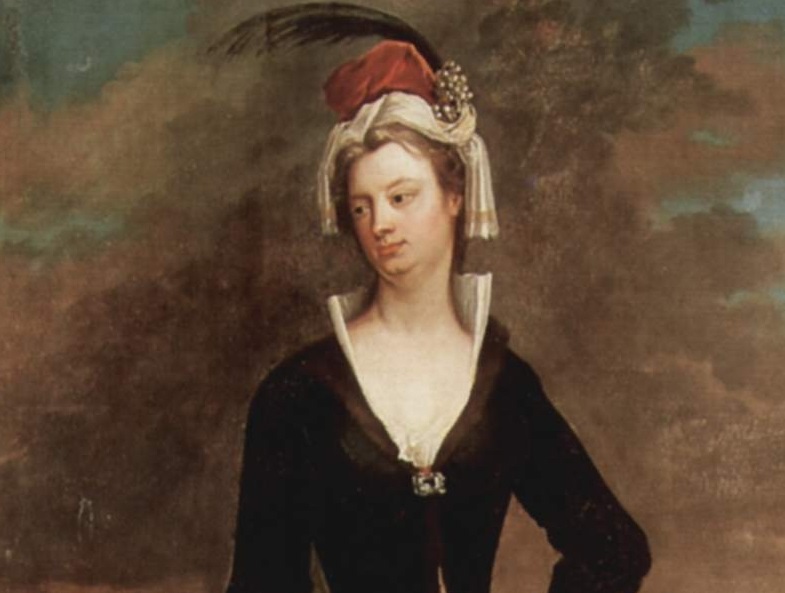
Date:
Image: Portrait of Lady Mary Wortley Montague, 1716, Charles Jervas, National Gallery of Ireland
It’s hard to imagine a greater global stressor than a pandemic. In the US alone, the COVID-19 pandemic has highlighted stark inequalities and systemic flaws that have been ignored for far too long. Yet out of this tragedy have also come unprecedented acts of kindness, bravery, unity, and innovation. Among the most anticipated innovations are vaccines to prevent COVID-19 infection. It’s amazing that we live in an era with access to vaccines, but it wouldn’t be possible today without the intrepid pioneers of the past who created vaccines and advocated for their use. In honor of Women’s History Month, I’d like to celebrate a woman who not only survived a pandemic but helped eventually eradicate it: Lady Mary Wortley Montagu.
While vaccines are a modern invention, the underlying principle of vaccination dates back centuries to treatments used to prevent smallpox. The smallpox virus wrought havoc throughout human history, killing a third of those it infected and leaving its survivors’ skin scarred from pox pustules. However, even in ancient times people noticed that smallpox survivors were protected, or immune, from getting it again. They wondered if this immunity could somehow be transferred to uninfected individuals. By the 10th Century CE, Chinese and Indian cultures had developed a method called variolation, whereby pustules from an infected person were removed and administered to an uninfected person through the nose or the skin as a powder or liquid extract. While variolation commonly caused mild smallpox symptoms, it prevented severe infection, widespread pox scarring, and death.
Variolation spread widely across Asia and Africa, but might never have been embraced in Europe without Lady Mary Wortley Montagu. Mary, a talented writer, moved from England to Constantinople (now Istanbul) during her husband’s tenure as the British Ambassador to Turkey in 1716. She wrote hundreds of letters at this time describing her experiences. One thing she noticed was that most of the locals were unmarred by smallpox scars, which she herself bore after contracting smallpox a few years prior. When she learned about variolation, she enlisted the help of one of the local women who performed the procedure and variolated her 5 year-old son in the hopes of sparing him the pain she had endured. Her decision was risky, but it would ultimately protect her son from smallpox for the rest of his life.
Mary was determined to spread awareness of variolation once she returned to England in 1718, but many of her contemporaries balked at the idea until another smallpox outbreak began in 1721. Ever the opportunist, Mary had her younger daughter variolated in front of an audience of British elites and medical professionals. When, like her son, her daughter recovered from the procedure and was protected from smallpox, many British nobles and even members of the royal family began to embrace variolation. The work Mary did to promote variolation in England would soon pave the way for the first vaccine against smallpox, which Edward Jenner developed in 1796 using a similar but less dangerous cowpox virus. Smallpox is now the only disease to have ever been eradicated thanks to subsequent generations of the vaccine, and we enjoy protection from dozens of other infectious diseases today because of vaccines.
Today, scientists have gotten really good at designing vaccines to more safely train the immune system. Whereas variolation, as well as the first smallpox vaccine, literally involved inoculating people with a live virus, many modern vaccines introduce just a tiny, non-infectious piece of a bacterium or virus to generate protective antibodies. Some, like the mRNA vaccines designed to prevent SARS-CoV-2 infection, even turn your cells into living factories by giving them the blueprints for a piece of the SARS-CoV-2 virus. Once your cells make this piece of the virus, the immune system starts making anti-viral antibodies to keep you safe from infection.
We’re far from eradicating COVID-19, but SARS-CoV-2 vaccines offer the hope of someday returning to “normal”: going to school or work, visiting friends and family, traveling for vacation. They will save countless lives. If I had been in Lady Mary Wortley Montagu’s shoes back then, I’m not sure I could have done what she did. She didn’t have access to research studies on vaccine safety like we do today, nor did she have the support of the scientific and medical communities in her home country. But I’m incredibly thankful for her bravery and tenacity – the world is a better place today because of it.


